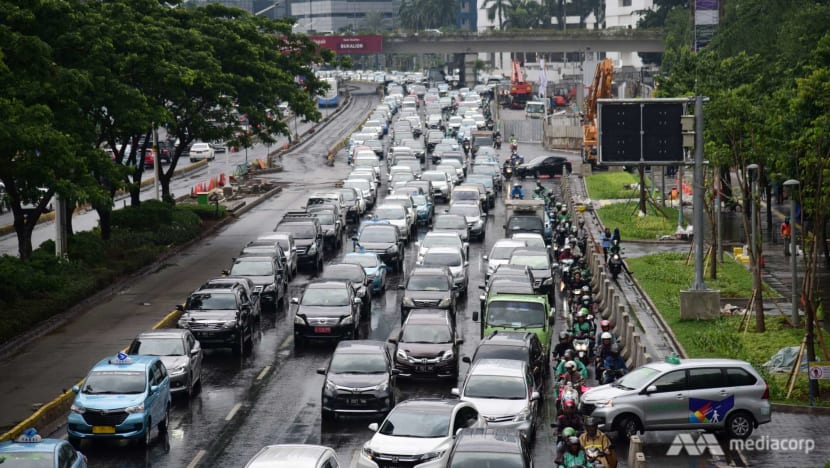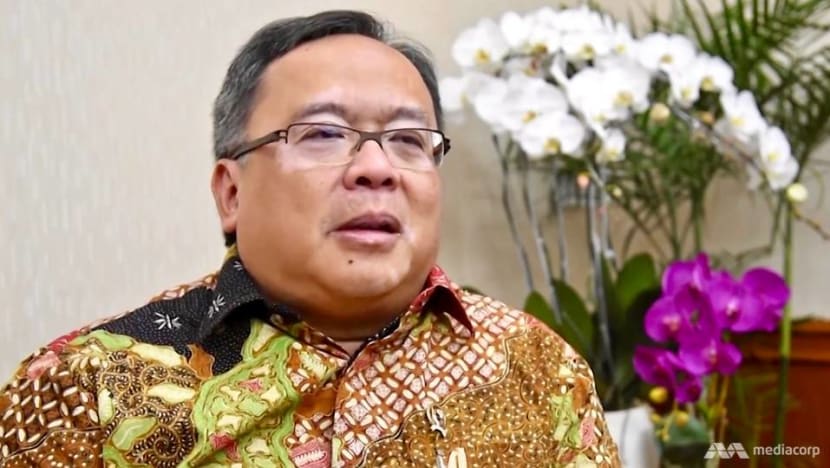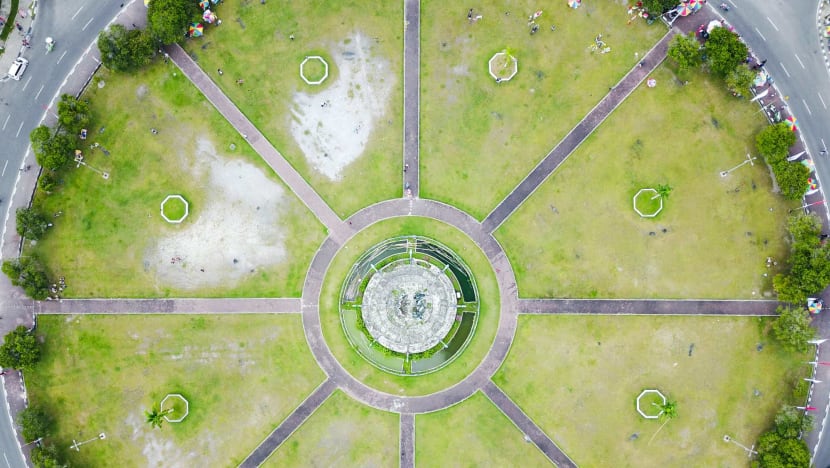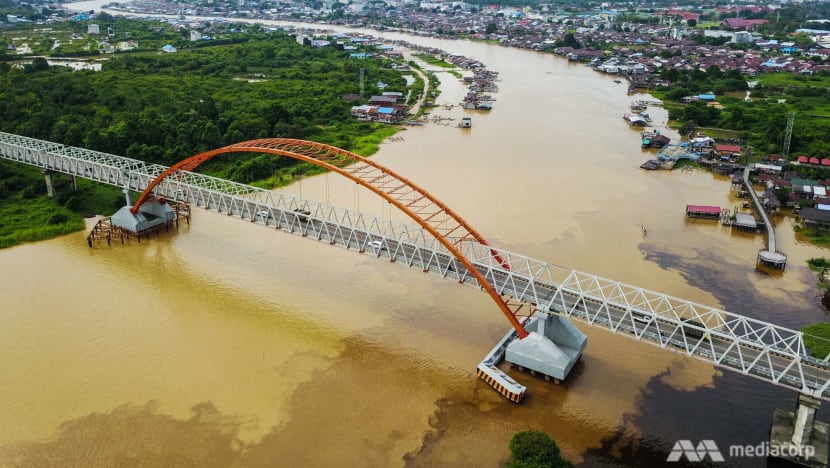Leaving Jakarta: Indonesia accelerates plans for 'green, smart' capital in the middle of Borneo wilderness

The forests of Bukit Soeharto could within years be home to hundreds of thousands of Indonesia's public servants. (Photo: Jack Board)
SAMARINDA, Indonesia: In the late 1970s, it is told, Indonesian president Suharto embarked on a journey along the coast of East Kalimantan, a lush flank of land stretching up the island of Borneo.
From a picturesque hill, he admired the natural surroundings, a stop on what is remembered by locals as an arduous journey between the cities of Balikpapan and Samarinda. He might never have believed that a few decades later, those stretches of lush forest could become home to Indonesia’s capital city.
READ: Study on relocating Indonesia’s capital more than 90% completed: Planning minister
READ: Commentary - Indonesia's plans to move its capital out of Java may not solve underlying issues
In commemoration of the president’s visit, the forest was named in his honour, and in 1991 it became a conservation area - a “great forest park”.
In this landscape the foundations of a city for one million people could soon be laid.

The Indonesian government has almost finished a long awaited feasibility study into the relocation of the country’s administrative core away from Jakarta. The chosen site for the new city will be announced this year, Minister of National Development Planning Bambang Brodjonegoro confirmed with CNA.
“If we can do that, then sometime in 2020 we can do all the preparation, including the master plan and a detailed design of the new capital," he said.
“Then in 2021, all the construction activities will be started with the expectation that by 2024, we can start the first steps of the movement of the capital.”

In shifting away from the urban density of Jakarta, the government will delve into the wilderness. The Bukit Soeharto area in East Kalimantan is a leading contender in what has become a bidding war between neighbouring provinces.
Despite a historically poor track record of environmental preservation, the Indonesian government wants to change the way it is perceived and showcase nature by constructing a city right among the trees.
“If this location is very close to the forest area in Kalimantan then the design of the city will be like a forest city. The city will actually revitalise the protected forest,” Bambang said.
“The motto of the city will be Smart, Green and Beautiful. A green city will be at the heart of our plan.”
President Joko Widodo has made massive infrastructure the signature priority of his leadership, investing billions in projects nationwide. But this represents a challenge of a different magnitude.
The ambitious timeline that has been proposed would give Jokowi a red-tape cutting moment in the eleventh hour of his presidency. It could coincide with the last year of his second and final term as the nation’s leader.
But there are many hurdles ahead, with plenty of critics who remain sceptical about the government's ability and motivation to pull it off.

‘MIDDLE OF NOWHERE’
A move now is more than just economics - there is symbolism encircling the decision. Java - with Jakarta its beating heart - has been the centre of everything in a sprawling nation that spans wider than western Europe or the North American continent.
Now it needs to be saved from itself, says Bambang. The proposed new capital will be located in Kalimantan, he confirmed, the geographic heart of the country that is deemed safe from Indonesia’s risk of natural disasters. It is also a nod to the forgotten lands and people of the archipelago.
READ: Indonesia to make moratorium on new forest clearance permanent: Minister
READ: Indonesia to tighten waste import rules after paper scrap smuggling controversy

“Moving the capital is part of the strategy of reducing inequality, especially inequality between Java and outside Java. The burden of Java is too big so now we understand that we also need to save Java,” Bambang said.
“We want to diversify. We want to create new sources of growth.”
Jakarta has a pressing range of problems expected to imperil the liveability of the city in the coming decades. The megalopolis is known to be sinking, while issues of overcrowding, congestion and poverty have added to its citizens’ woes.
Elisa Sutanudjaja, the executive director of Rujak Center for Urban Studies doubts that shifting the capital from Jakarta will lead to any major improvements for its residents, given the number affected is just a small fraction of the 30 million plus population.
READ: Jakarta takes first step on journey to end traffic nightmare with new MRT
READ: Bleak future for Jakarta cyclists as cars dominate the city's roads
In fact, she does not believe the plan will happen at all.
“It takes too much effort, from law revision to ensuring that the budget is there. For me, it's just a bad example of land speculation,” she said.

Ben Bland, research fellow and director of the Southeast Asia project at the Lowy Institute, an international policy think tank, says the strategy appears to be earnest, but more progress and information needs to be shown before Indonesians will be convinced.
The details of the feasibility study remain secretive and there has been little public discussion or oversight.
“Given that this has issue has been discussed for so long without progress, investors and civil servants are unlikely to take the government seriously until there are concrete moves to make this happen,” Bland said.
There are lessons to be learnt from the experiences - good and bad - of other nations who have undertaken, or are attempting, the mammoth task of moving their capital, from Brazil to Myanmar, Malaysia and Egypt.
Some have been successful in decentralising crowded capitals, but other projects have been left as white elephants, with ghost cities having to be endured by public servants.
Thus, a well rounded choice of location in such an expansive nation is critical, explained Bambang.
“We are trying to avoid the location that can be categorised as the middle of nowhere.”
LEGACIES OF PRESIDENT’S PAST
The concept of breaking ground for a new capital city is not new. In fact, proposals to move from Jakarta have dotted Indonesia’s modern history.
It was the founding president himself Sukarno that put a relocation on the agenda back in the 1950s in the early years of Indonesia’s independence. President Suharto also wanted to shift the capital in the 1990s to a nearby city in Java, a plan shafted when he resigned.
READ: Grow more durians Jokowi tells struggling palm oil producers, with rural votes in balance
READ: Slow replanting of palm a blow to Indonesia's efforts on environment
The legacies of both former leaders hang over critical choices being made now about Indonesia’s future.

The people of Palangkaraya in Central Kalimantan believe there is a destiny in their city becoming capital. From its inception, it was modelled on Washington DC with a large traffic circle, mall and wide avenues, engineered by Russians.
“Sukarno wished to build a new city like Washington DC, a new type of city to be a model for Indonesia. His ambition was to realise it in Palangkaraya,” said Central Kalimantan Governor Sugianto Sabran.
That vision will be complicated by contemporary challenges of land ownership and availability. Palangkaraya is far from a bustling city, but with a population of about 250,000 people, it cannot simply be supplanted.
“Most of the land is already owned by people and occupied. And the area itself mostly is swamp or peatland. It is more natural if they build a new city,” said Wijanarka, local architect and university lecturer.
An area north of the city has been proposed that straddles three local regencies, dubbed the “Palangkaraya Triangle”. There is ample room for the construction of a large city, which would be flanked by two major rivers. It is an area being properly examined by the planning ministry.
It has the support of many Palangkaraya residents, excited about the prospect of the hum of economic activity and investment in their area. “Palangkaraya is safe, there are no protests, no rallies and it’s peaceful. We locals are ready,” long term resident Dwi Subagyo boasted.

Yet, despite the keenness, history and nostalgia connected to Palangkaraya, there are obvious weaknesses to the bid, such as a lack of significant infrastructure and access to a seaport - both key criteria in the central government’s feasibility study. The city is inland, meaning the construction of hundreds of kilometres of major roads to the coast would be needed.
“We are trying to utilise economies of scale by locating the new capital not too far from functional cities, functional areas and of course the availability of infrastructure,” Bambang said.
“We do not expect to build a new big airport, a new seaport or big road networks like a toll road for the capital.”
These measures tilt the candidacy favour back towards East Kalimantan and the sweeping hills of Bukit Soeharto.

DEEP SCARS
The area lies in the middle of two major, coastal cities - Balikpapan and Samarinda, which are currently having their connectivity improved by a multi-lane toll road due for completion soon. Both cities boast working ports, modern airports and tourism sites that could be further developed.
“We hope the president will choose East Kalimantan as we already have infrastructure which does not really need much improvement,” said acting East Kalimantan province secretary Muhammad Sabani.
Still, it is not these types of infrastructure that have environmentalists worried, rather the need to build an entire city from scratch over thousands of hectares.
“If the new capital city is going to be built there, the function of the forest will change. The development of hotels and shopping centres will need extensive land clearing. We actually reject the plan,” said Hafidz Prasetyo, advocacy and campaign department head for environmental NGO Walhi in East Kalimantan.
“As a conservation area, it should be a home for sun bears, local birds and other kinds of animals as well as teak woods, bengkirai woods and those should be preserved,” he said. “It’s better for the government to rethink the plan. Please consider the condition and future of the forest park, which later will affect other areas.”
Bukit Soeharto has gone through plenty of iterations during the past decades. In a former generation, the area became a production timber forest. It has been reclassified several times but principally has been set aside for conservation in recent times. It is land owned and controlled by the state.

Today, it is far from pristine terrain, though in parts the forest is still dense and unyielding. Humans have left deep scars here already, particularly in the last ten years, locals say. Small scale coal mines and smatterings of palm oil plants have been allowed to intrude into what is a designated protected area. Illegal deforestation and frequent forest burning have further degraded the quality of the land.
Just a few kilometres from the proposed site of the new capital, a sanctuary exists for rescued orangutans and sun bears showcases the differing fates between public and private land.
The hundreds of individual animals living at the Borneo Orangutan Survival Foundation enjoy a life of protection away from their natural habitats ravished by human activity throughout the region.
For Hafidz, the government’s strategy of transforming a forest into a city is representative of the country’s cavalier attitude towards the environment. “Bukit Soeharto looks pristine but there are plenty of forest encroachers. So what’s the difference between them and the government?”
Still, for the locals in the area, there is a building excitement about the potential announcement. It would be transformative for their lives, even if it results in their likely eviction from the area.
“When Pak Jokowi visited this area, we lined up outside to see him. It was so exciting,” said Putri Ayu, one of about 15,000 people living inside the bounds of Bukit Soeharto. “I also know that East Kalimantan is one of the candidates for the new capital and I support it,” Suryana agreed.
In their favour, the president appeared to show an enthusiastic interest in the area during a recent tour of various relocation sites. “Here, I see that everything is supportive,” President Jokowi was reported as saying by local media.
If he can make it happen, he will have achieved something that has eluded all of this forebears. Even if his time in office elapses long before the city truly takes root.
(Additional reporting by Winda Charmila)














